If you've ever stepped in sticky gum, it's similar to what happens when an insect steps into milkweed pollinia.
Take the wasps visiting the tropical milkweed (Asclepias curassavica) on Thursday morning, July 16 in the UC Davis Arboretum and Public Garden.
They foraged on the colorful red, yellow and orange blossoms, and as nature intended (for reproductive reasons), flew off with that sticky pollinia from the anthers.
Basically, pollinia is a sticky packet of golden pollen grains originating from a single anther. The wishbone-shaped pollinia are in a nectar trough where insects often get trapped. Some insects manage to escape but leave body parts behind. A foot here...a wing there...an antenna over there...
One wasp exited a flower with "the golden glue" on its feet.
“Too funny with all the milkweed pollinia all over its feet,” commented Lynn Kimsey, director of the Bohart Museum of Entomology and Nematology and professor of entomology at UC Davis, who identified the wasp as a species of Podalonia, parasitoidal wasps in the family Sphecidae. "It looks like it's wearing fluffy socks.”
We've seen honey bees on showy milkweed (Asclepias speciosa) struggling to free themselves, only to find the bees dead the next day--and new recruits buzzing in for their share.
These Podalonia wasps, however, managed to navigate the "traps" quite well.
They'll be back for another round.
(Reminder: Folks planting the tropical milkweed in temperate zones (like here in Davis, Calif.) must remove or cut back the tropical milkweed by winter. "A protozoan parasite of monarch butterflies, Ophryocystis elektroscirrha or OE for short, can travel with monarchs visiting the plants and become deposited on leaves," explains the Xerces Society for Invertebrate Conservation.)
Attached Images:
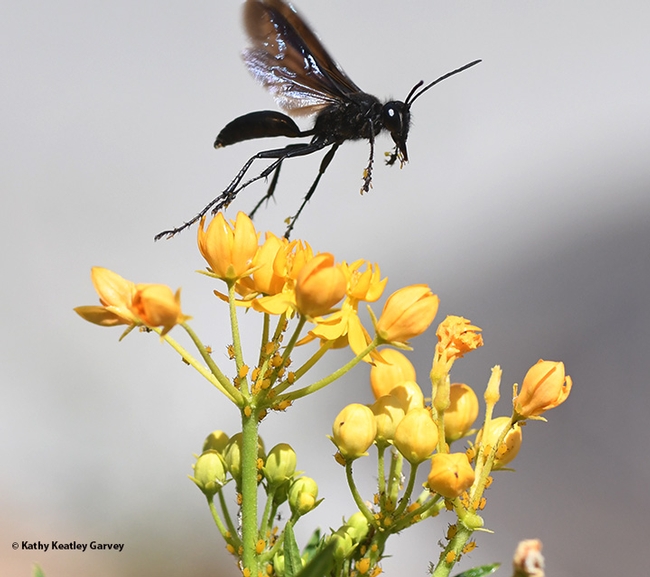
This wasp, a species of Podalonia, flies off a tropical milkweed at the UC Davis Arboretum and Public Garden with a load of pollinia, a packet of sticky golden pollen grains. (Photo by Kathy Keatley Garvey)
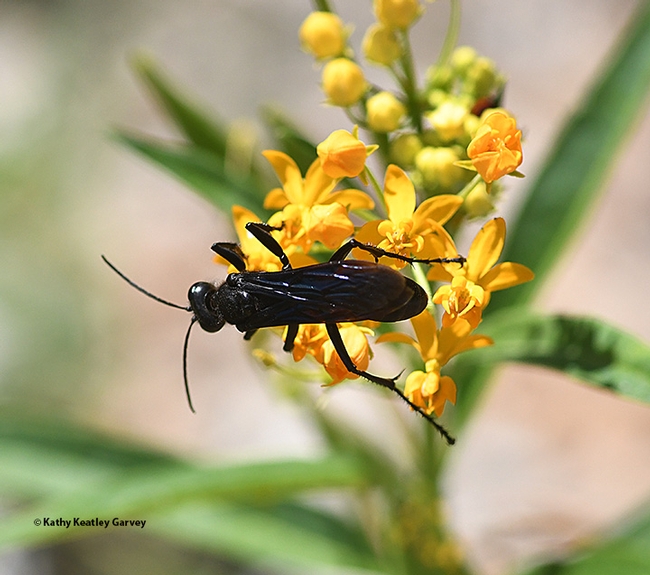
A Podalonia wasp nectars on tropical milkweed at the UC Davis Arboretum and Public Garden. (Photo by Kathy Keatley Garvey)
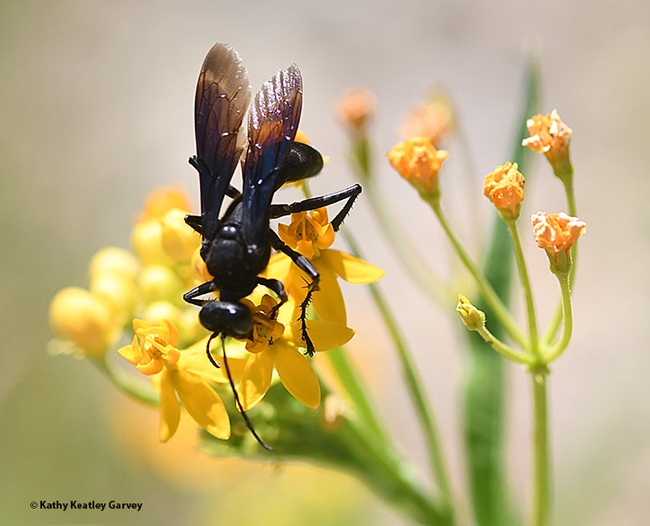
A wasp foraging upside down on tropical milkweed at the UC Davis Arboretum and Public Garden. (Photo by Kathy Keatley Garvey)
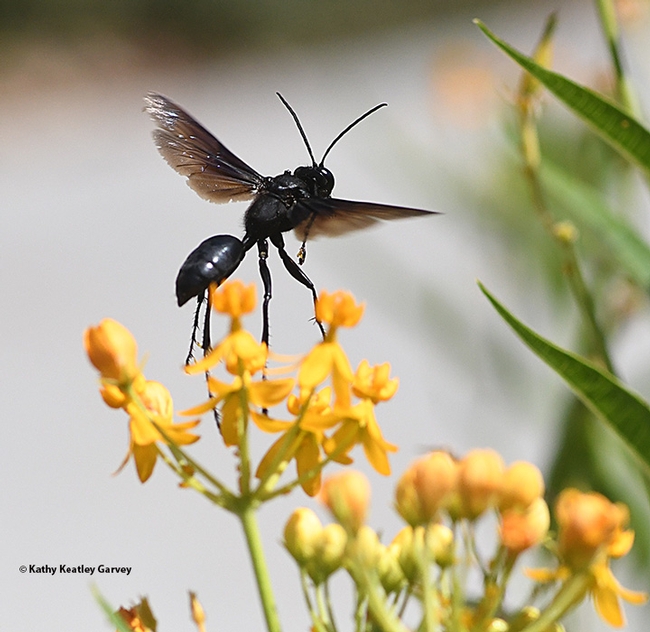
Off to another tropical milkweed--and off packing pollinia. (Photo by Kathy Keatley Garvey)
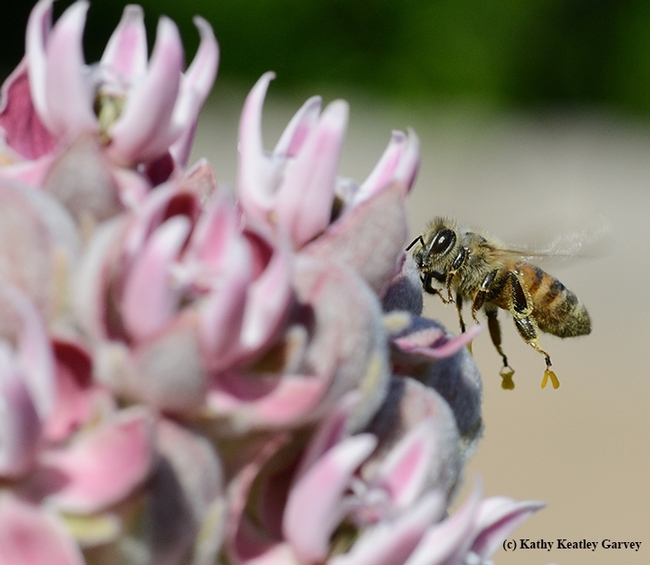
Note the gold, wishboned-shaped pollinia on the honey bee's feet as she heads for more showy milkweed. (Photo by Kathy Keatley Garvey)